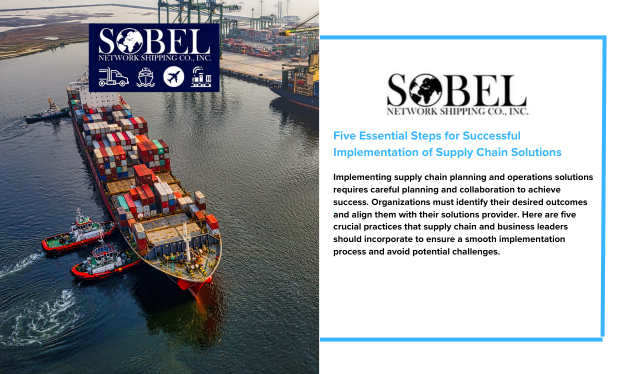Implementing supply chain planning and operations solutions requires careful planning and collaboration to achieve success. Organizations must identify their desired outcomes and align them with their solutions provider. Here are five crucial practices that supply chain and business leaders should incorporate to ensure a smooth implementation process and avoid potential challenges.
- Collaborate with vendors to develop a solid business case.
Effective supply chain technology implementation relies on a strong partnership between the client and the vendor. It is essential to have a clear understanding of the organization’s real-world challenges and how the software will address those issues. This collaborative approach helps determine which software components are vital for the project’s success. By documenting the outcomes of these discussions in a joint business case, both parties can align their goals and minimize misunderstandings throughout the implementation process.
- Assess data availability and address data gaps.
Data plays a crucial role in supply chain technology implementations. Certain types of data, such as master data and transactional data, are essential for accurate measurement and demand forecasting. Identifying data gaps and ensuring the availability of necessary data are critical for setting realistic project goals. A data-rich environment supports effective supply chain planning and decision-making, increasing the likelihood of achieving desired outcomes.
- Align goals and key performance indicators (KPIs).
Different organizations have varying priorities when it comes to supply chain projects. To measure success accurately, stakeholders, including vendors and users at all levels, must align their goals and define relevant key performance indicators (KPIs). Continuous improvement requires periodic reviews and adjustments to ensure goals remain relevant and achievable. Aligning goals and KPIs across both the vendor and client organizations fosters shared objectives and enhances the implementation’s effectiveness.
- Foster mutual accountability.
Translating documented goals and measures into action necessitates mutual accountability between the vendor and the client. Vendors should encourage clients to prioritize the right goals and KPIs, while clients need to keep vendors on track to achieve the desired outcomes. Just as demand and supply teams hold each other accountable, cross-pollination of KPIs ensures that both parties remain focused on achieving the project’s goals. Though uncomfortable conversations may arise, they are part of the implementation process and serve the purpose of increasing the likelihood of desired outcomes.
- Understand baseline data for current-state KPIs.
Having a clear understanding of baseline data is crucial at the beginning of a supply chain technology implementation. Baseline data provides a starting point for measuring improvements and setting achievable expectations. As project requirements evolve, baselines may change, reflecting adjustments to planning processes or data measurement methods. Fine-tuning baselines over time allows for accurate measurement of progress and improvement. Emphasizing continuous improvement throughout the implementation process ensures long-term success.
Original Article Linked Here


